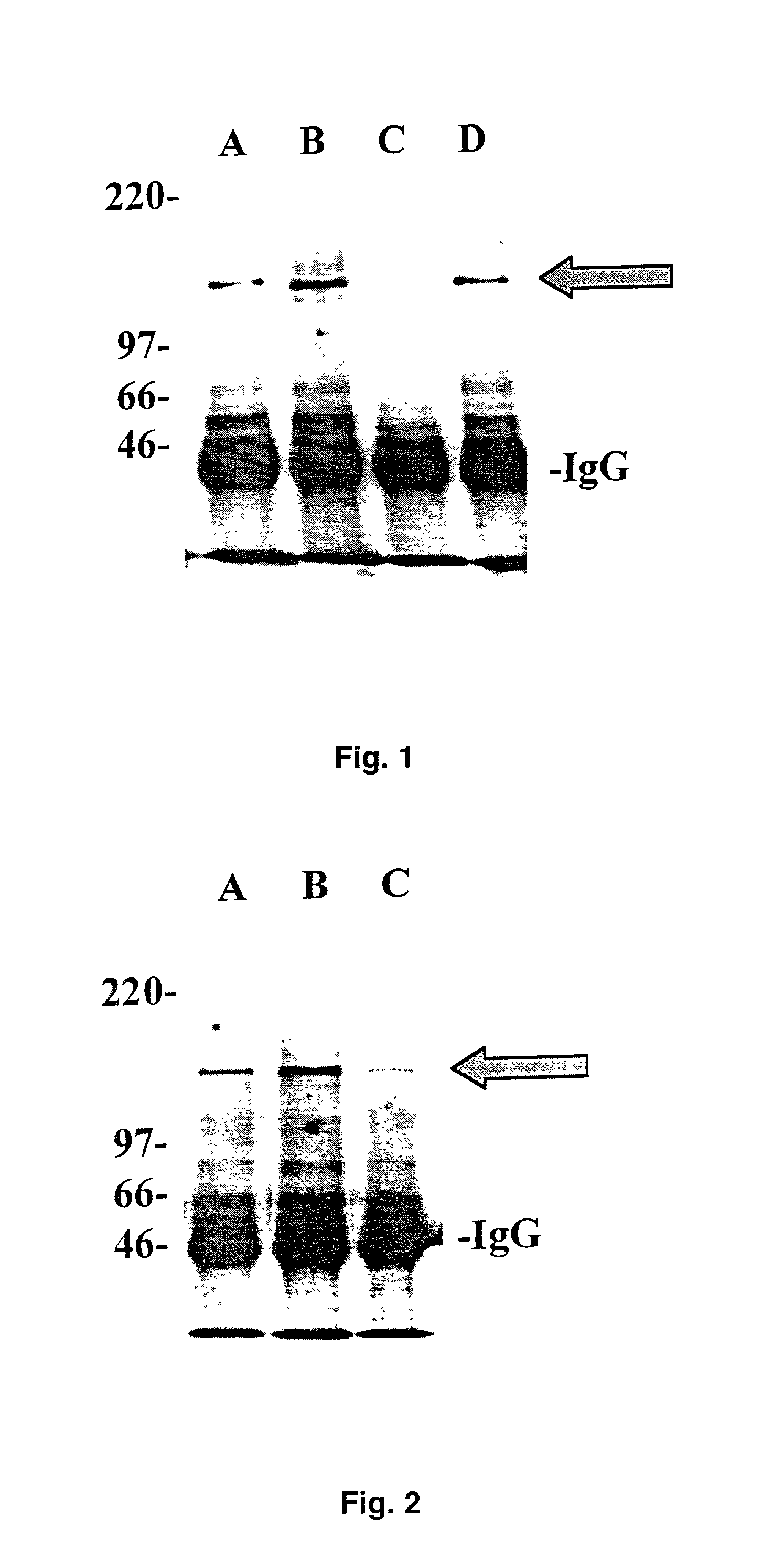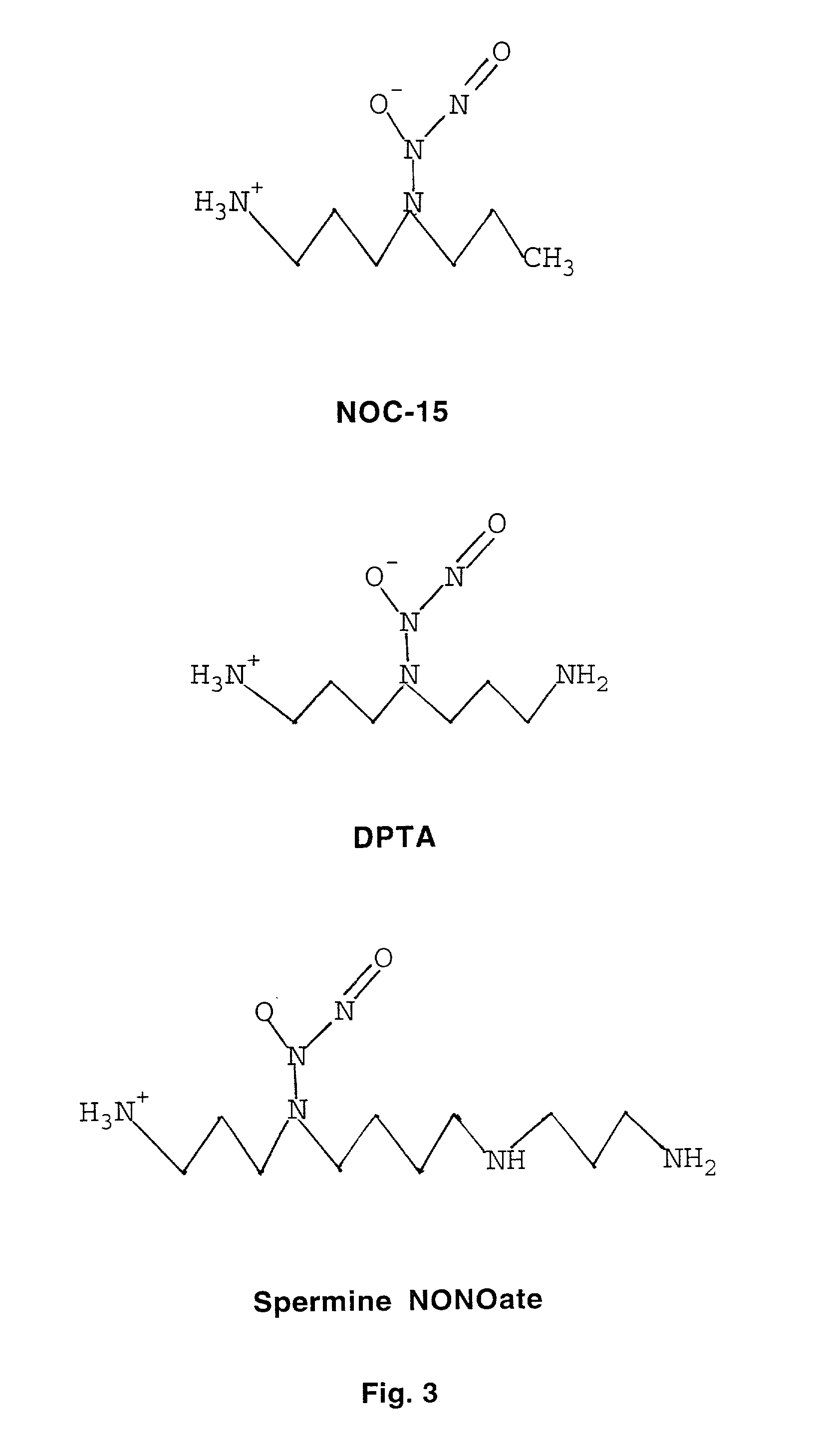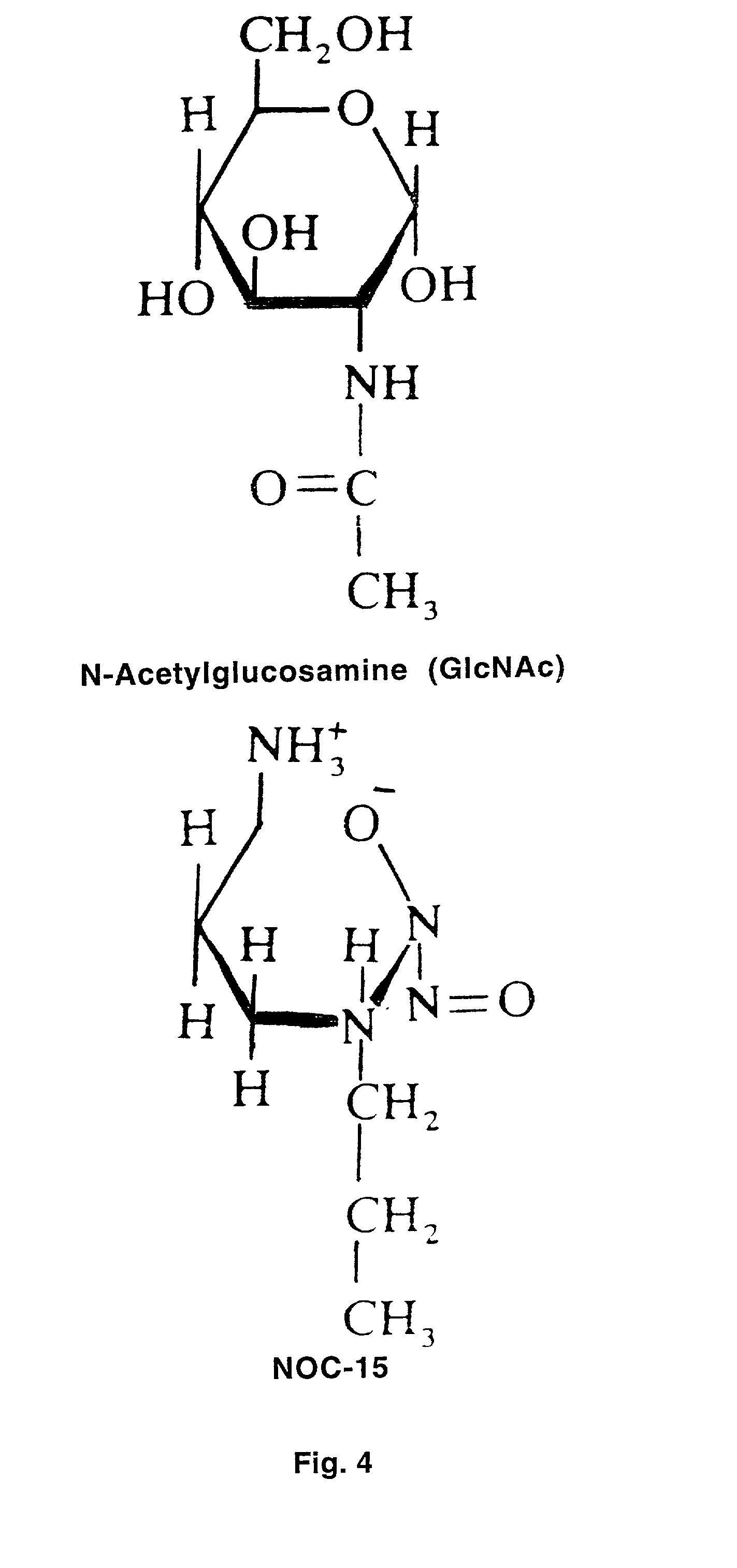Prevention and/or treatment of diabetes mellitus by pharmacologically inhibiting pancreatic beta-cell O-linked protein glycosylation and/or pancreatic beta-cell p135 O-glycosylation
a technology of o-linked protein and p135, which is applied in the field of medical therapy for diabetes, can solve the problems of increased blood glucose, worsening of the condition, and loss of the capacity of the .beta-cells in the pancreatic islets to produce sufficient amounts, and the prior art is deficient in the lack of effective blocking mechanisms of p135
- Summary
- Abstract
- Description
- Claims
- Application Information
AI Technical Summary
Benefits of technology
Problems solved by technology
Method used
Image
Examples
example 1
[0037] NOC-15 Inhibits Pancreatic Islet p135 O-glycosylation
[0038] Rat pancreatic islets were isolated as previously described (1). After isolation, islets were counted into tubes and pre-incubated with 3 mM glucose. Following pre-incubation, islets were stimulated with 3 mM glucose, 5 mM streptozotocin, 5 mM NOC-15, or 5 mM DPTA. At the end of the experiment, O-glycosylated proteins were immunoprecipitated with RL2 antibody, which binds to O-linked N-acetylglucosamine (3). Immunoprecipitated proteins were run out on a 6.5% SDS-PAGE gel and the proteins were then transferred to a nitrocellulose blot. The blot was then probed with RL2 antibody, which was detected by the ECL method. The blot was exposed to X-ray film and the film was developed and photographed.
[0039] The results shown demonstrate that islets contain a major O-glycosylated protein called p135 and that its O-glycosylation is stimulated by streptozotocin. DPTA has no effect on p135 O-glycosylation, but NOC-15 completely ...
PUM
 Login to View More
Login to View More Abstract
Description
Claims
Application Information
 Login to View More
Login to View More - R&D
- Intellectual Property
- Life Sciences
- Materials
- Tech Scout
- Unparalleled Data Quality
- Higher Quality Content
- 60% Fewer Hallucinations
Browse by: Latest US Patents, China's latest patents, Technical Efficacy Thesaurus, Application Domain, Technology Topic, Popular Technical Reports.
© 2025 PatSnap. All rights reserved.Legal|Privacy policy|Modern Slavery Act Transparency Statement|Sitemap|About US| Contact US: help@patsnap.com



